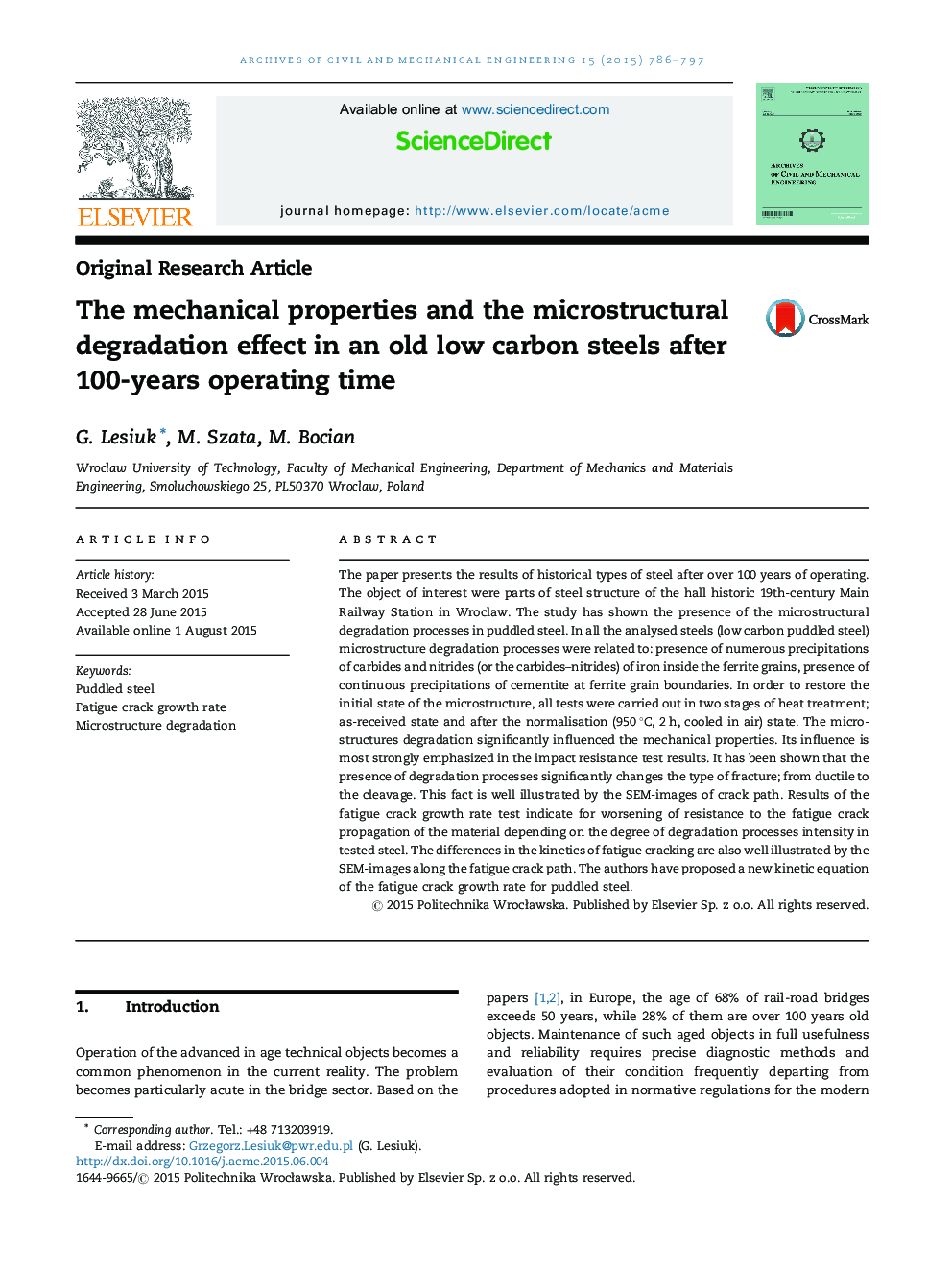| Article ID | Journal | Published Year | Pages | File Type |
|---|---|---|---|---|
| 245926 | Archives of Civil and Mechanical Engineering | 2015 | 12 Pages |
The paper presents the results of historical types of steel after over 100 years of operating. The object of interest were parts of steel structure of the hall historic 19th-century Main Railway Station in Wroclaw. The study has shown the presence of the microstructural degradation processes in puddled steel. In all the analysed steels (low carbon puddled steel) microstructure degradation processes were related to: presence of numerous precipitations of carbides and nitrides (or the carbides–nitrides) of iron inside the ferrite grains, presence of continuous precipitations of cementite at ferrite grain boundaries. In order to restore the initial state of the microstructure, all tests were carried out in two stages of heat treatment; as-received state and after the normalisation (950 °C, 2 h, cooled in air) state. The microstructures degradation significantly influenced the mechanical properties. Its influence is most strongly emphasized in the impact resistance test results. It has been shown that the presence of degradation processes significantly changes the type of fracture; from ductile to the cleavage. This fact is well illustrated by the SEM-images of crack path. Results of the fatigue crack growth rate test indicate for worsening of resistance to the fatigue crack propagation of the material depending on the degree of degradation processes intensity in tested steel. The differences in the kinetics of fatigue cracking are also well illustrated by the SEM-images along the fatigue crack path. The authors have proposed a new kinetic equation of the fatigue crack growth rate for puddled steel.
